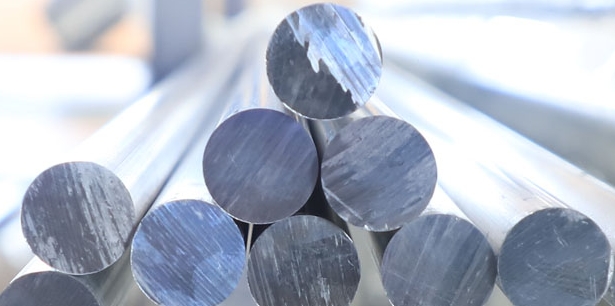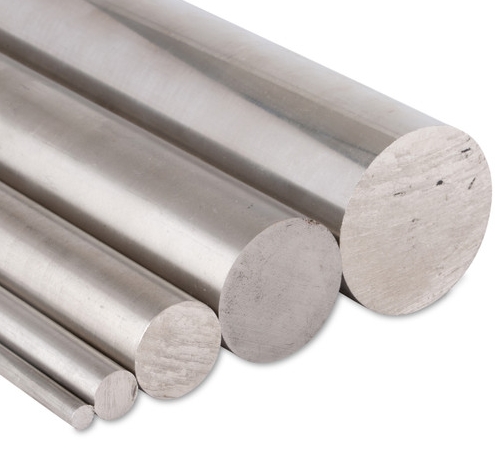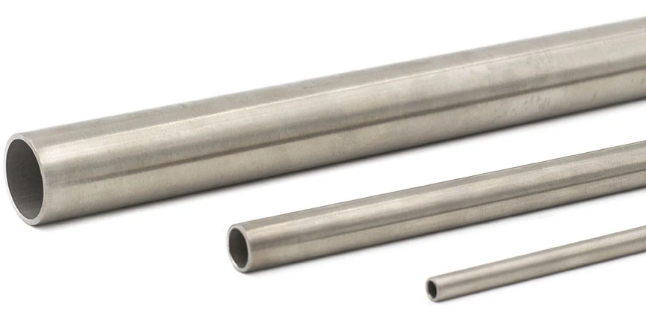304 vs 316 Stainless Steel: Everything You Need to Know
304 and 316 stainless steel are commonly used in a variety of industries, but their respective advantages and disadvantages, applications, and applicable scenarios are different. Understanding their differences can help you make a more informed material choice.
The main difference between 304 and 316 stainless steel lies in their composition, corrosion resistance, and relevance in CNC machining. 316 stainless steel contains more molybdenum and is suitable for more demanding environments, while 304 stainless steel is more suitable for general use. Understanding these differences can help you choose the most appropriate material for a specific need.
Next, we will delve into the specific differences, application areas, and selection guidelines for CNC projects of 304 and 316 stainless steel.
What is Stainless Steel?
Stainless steel is an alloy primarily made up of iron, chromium, and nickel, with varying proportions of additional elements like molybdenum, manganese, and carbon. These alloys are known for their resistance to rust and corrosion, making them ideal for CNC machining processes, especially in industries that require precision parts with high durability.
304 Stainless Steel and 316 Stainless Steel are austenitic types of stainless steel, meaning they are non-magnetic and are more resistant to oxidation and rust. However, they differ mainly in the additional element of molybdenum in 316 Stainless Steel, which enhances its resistance to corrosive environments.

Note: If you want to learn more about stainless steel, you can read the following article:
The Ultimate Guide to Stainless Steel Turning
Is Stainless Steel Magnetic? A Comprehensive Guide
304 Stainless Steel
304 Stainless Steel is the most widely used stainless steel alloy in CNC machining and manufacturing. It contains 18-20% chromium and 8-10% nickel, offering a balance between corrosion resistance, strength, and affordability.
316 Stainless Steel
316 Stainless Steel is an enhanced version of 304 Stainless Steel, distinguished by the addition of 2-3% molybdenum. This addition provides superior resistance to corrosion, especially in aggressive environments like marine settings, chemical processing, and medical device manufacturing.
What is the Difference Between 304 and 316 Stainless Steel in CNC Machining?
When selecting materials for CNC machining, understanding the differences between 304 and 316 Stainless Steel is crucial for optimizing performance, durability, and cost-effectiveness. These two grades are among the most commonly used stainless steels, but they are suited for different applications due to variations in their chemical composition and corrosion resistance. Here are their differences:
Corrosion Resistance: The main difference between 304 Stainless Steel and 316 Stainless Steel is that 316 Stainless Steel contains molybdenum, which enhances its resistance to corrosion in chloride environments. 304 Stainless Steel, while still resistant to oxidation and rust, is more prone to corrosion when exposed to salty or acidic conditions.
Chemical Composition: The primary difference in composition is the add ition of molybdenum (2-3%) in 316 Stainless Steel, which contributes to its superior resistance to corrosion.
Cost: 316 Stainless Steel is more expensive than 304 Stainless Steel because of its enhanced corrosion resistance and the inclusion of molybdenum.
304 vs 316 Stainless Steel: A Direct Comparison
| Feature | 304 Stainless Steel | 316 Stainless Steel |
|---|---|---|
| Chromium Content | 18-20% | 16-18% |
| Nickel Content | 8-10% | 10-14% |
| Molybdenum | 0% | 2-3% |
| Corrosion Resistance | Good | Excellent |
| Cost | Lower | Higher |
| Magnetic Property | Slightly Magnetic | Non-Magnetic |
Chemical Composition
Detailed Breakdown
| Element | 304 Stainless Steel | 316 Stainless Steel |
|---|---|---|
| Chromium | 18-20% | 16-18% |
| Nickel | 8-10% | 10-14% |
| Molybdenum | 0% | 2-3% |
| Carbon | ≤ 0.08% | ≤ 0.08% |
| Manganese | 2% | 2% |
Magnetism
Both 304 Stainless Steel and 316 Stainless Steel are considered non-magnetic in their annealed state. However, 304 Stainless Steel can become slightly magnetic when cold-worked or welded. On the other hand, 316 Stainless Steel remains non-magnetic under most conditions. This difference is important in applications where magnetism is a concern, such as in magnetic-sensitive environments or equipment.
Mechanical Properties of 304 vs 316 Stainless Steel
Both 304 Stainless Steel and 316 Stainless Steel offer excellent mechanical properties like tensile strength, elongation, and hardness, which makes them suitable for structural applications. However, 316 Stainless Steel slightly outperforms 304 Stainless Steel in terms of high-temperature resistance and corrosion resistance in extreme environments.
Mechanical Properties Comparison
| Property | 304 Stainless Steel | 316 Stainless Steel |
|---|---|---|
| Tensile Strength | 515-750 MPa | 515-720 MPa |
| Yield Strength | 205 MPa | 205 MPa |
| Elongation | 40-50% | 40-50% |
| Hardness (Brinell) | 160 HB | 160 HB |
Price Difference of 304 Stainless Steel vs 316
The price difference between 304 Stainless Steel and 316 Stainless Steel primarily reflects the enhanced properties of 316 Stainless Steel, particularly its corrosion resistance. 316 Stainless Steel is more expensive due to the inclusion of molybdenum, but it is often necessary for high-performance applications.
Applications for 304 Stainless Steel in CNC Machining
304 Stainless Steel is one of the most widely used materials in CNC machining due to its excellent balance of strength, corrosion resistance, and ease of fabrication. Its versatility makes it suitable for a broad range of industries and applications, including but not limited to:
1. Automotive Industry
CNC-machined parts like exhaust systems, engine components, heat shields, and decorative trim are often manufactured from 304 Stainless Steel. Its ability to withstand moderate heat and resist rust makes it a reliable option for vehicles operating in varying environmental conditions.
2. Architectural and Structural Applications
Due to its aesthetic appeal and durability, 304 Stainless Steel is a popular choice for CNC milling of architectural features such as handrails, panels, facades, and brackets. It offers a sleek finish that withstands weathering, making it ideal for both interior and exterior designs.
3. Industrial and General Manufacturing
304 Stainless Steel is frequently used to machine precision parts for machinery, industrial valves, storage tanks, and equipment that require a strong yet corrosion-resistant material. Its machinability allows manufacturers to produce intricate designs efficiently.
4. Household Appliances
From CNC-machined kitchen appliances to plumbing fixtures, 304 Stainless Steel offers durability and a polished appearance. Products like sinks, cutlery, and cookware benefit from its resistance to daily wear and tear.
Advantages of 304 Stainless Steel in CNC Machining
304 Stainless Steel is a popular choice for CNC machining due to its excellent properties, making it a go-to material for a wide range of industries. Below are the detailed advantages of using 304 Stainless Steel in CNC machining:
1. Cost-Effectiveness
304 Stainless Steel is one of the most affordable stainless steel grades, offering an excellent balance of performance and price. Its widespread availability and suitability for high-volume production make it a cost-efficient choice for manufacturers. Compared to more specialized alloys, it delivers strong performance without significantly increasing material costs.
2. Ease of Machining
With its moderate hardness and excellent machinability, 304 Stainless Steel is easier to process using CNC milling, turning, and drilling operations compared to harder alloys. Its machinability reduces tool wear and allows for faster production cycles, making it suitable for precision parts and intricate designs.

3. Versatile Corrosion Resistance
304 Stainless Steel offers impressive resistance to oxidation, rust, and many chemicals encountered in general industrial and everyday environments. This makes it a reliable option for applications where the material is exposed to moisture, atmospheric conditions, or mild acids, ensuring long-lasting performance.
4. Wide Range of Applications
Thanks to its versatility, 304 Stainless Steel is used across industries, including food processing, automotive, construction, and household appliances. Its strength, coupled with a clean finish, makes it an ideal material for both functional and aesthetic components.
Limitations of 304 Stainless Steel in CNC Machining
Despite its many benefits, 304 Stainless Steel has limitations that must be considered when choosing materials for specific applications:
1. Not Suitable for Harsh Chemical Environments
While 304 Stainless Steel offers good general corrosion resistance, it is not well-suited for environments with high levels of chlorides, saltwater, or harsh chemicals. In such conditions, it can develop pitting or localized corrosion, compromising its integrity. For these scenarios, 316 Stainless Steel, with its molybdenum content, is a better alternative.
2. Limited Heat Resistance
Although 304 Stainless Steel performs well at moderate temperatures, it is not ideal for applications involving prolonged exposure to high heat. Under extreme temperature conditions, it may lose its structural strength or experience thermal fatigue. For high-temperature environments, heat-resistant alloys or stainless steels with better thermal properties, such as 316 or specialized grades, are recommended.
3. Slightly Lower Durability Compared to Specialized Alloys
While durable, 304 Stainless Steel is not as tough or wear-resistant as certain other alloys. For applications requiring extreme strength or abrasion resistance, other materials may offer better performance.
Applications for 316 Stainless Steel in CNC Machining
316 Stainless Steel is a premium material in CNC machining, renowned for its exceptional corrosion resistance and durability in challenging environments. Its enhanced properties, thanks to the addition of molybdenum, make it ideal for demanding applications where 304 Stainless Steel may fall short.
1. Marine and Offshore Equipment
316 Stainless Steel is the material of choice for CNC-machined components used in marine and offshore environments. Its ability to resist pitting and corrosion caused by saltwater makes it ideal for:
- Ship parts such as propellers, shafts, and engine components.
- Submarine fittings and structural elements.
- Offshore platform equipment, including brackets, fasteners, and rigging components.
- Desalination system parts exposed to high concentrations of chlorides.
2. Chemical and Pharmaceutical Industries
316 Stainless Steel’s resistance to aggressive chemicals makes it indispensable for industries handling corrosive substances. CNC-machined parts include:
- Reactors and mixing tanks for chemical production.
- Pipes, fittings, and valves used in chemical processing plants.
- Pharmaceutical-grade tanks and equipment for high-purity applications.
Its ability to withstand frequent cleaning and exposure to strong disinfectants also makes it a trusted material for sterile environments.
3. Medical and Healthcare Devices
The biocompatibility and corrosion resistance of 316 Stainless Steel make it a preferred material for CNC machining in the medical field. Applications include:
- Surgical instruments that must endure sterilization and exposure to bodily fluids.
- Implants such as bone screws, plates, and prosthetics.
- Diagnostic equipment components that require precision machining and durability.
316 Stainless Steel’s hygienic properties and non-reactive surface ensure patient safety and product longevity.
4. Food and Beverage Industry
In applications where equipment comes into contact with salty, acidic, or high-temperature conditions, 316 Stainless Steel stands out. CNC-machined components include:
- Processing equipment for acidic foods and beverages, such as citrus or tomato-based products.
- Sterilization equipment exposed to high-pressure steam or cleaning chemicals.
- Conveyors, tanks, and fittings used in high-salinity environments, such as seafood processing.
5. Industrial and High-Performance Applications
Beyond these industries, 316 Stainless Steel is employed in other challenging environments, such as:
- Aerospace components exposed to extreme environmental conditions.
- Power generation equipment in corrosive or high-temperature settings.
- Laboratory equipment requiring a high level of corrosion resistance.
Advantages of 316 Stainless Steel in CNC Machining
316 Stainless Steel is a high-performance material that offers a range of advantages for CNC machining, particularly in demanding environments where other materials may fail. The following are its advantages:
1. Superior Corrosion Resistance
The standout feature of 316 Stainless Steel is its exceptional resistance to corrosion, particularly in environments rich in chlorides, salt, or chemicals. This makes it a preferred choice for:
- Marine environments where constant exposure to saltwater can corrode other metals.
- Chemical processing industries that handle aggressive substances, including acids and alkalis.
- Applications requiring long-term resistance to pitting and crevice corrosion.
The addition of molybdenum in 316 Stainless Steel enhances its ability to withstand harsh conditions, ensuring durability and reliability in critical applications.
2. Enhanced Durability in Harsh Conditions
316 Stainless Steel components have a longer lifespan in extreme environments, reducing maintenance and replacement costs over time. This durability is particularly advantageous for:
- Medical implants, which must resist bodily fluids and maintain integrity within the human body.
- Industrial equipment exposed to abrasive chemicals or fluctuating environmental conditions.
Its toughness and ability to retain strength under stress make it ideal for critical parts where failure is not an option.

3. Improved High-Temperature Performance
Compared to 304 Stainless Steel, 316 Stainless Steel performs better in high-temperature applications. Its superior oxidation resistance and mechanical strength make it suitable for:
- Heat exchangers, boilers, and industrial furnaces that operate at elevated temperatures.
- Aerospace and automotive components exposed to extreme heat during operation.
Limitations of 316 Stainless Steel in CNC Machining
While 316 Stainless Steel offers exceptional benefits, it also presents certain challenges that manufacturers must consider:
1. Higher Material Cost
The inclusion of molybdenum and other alloying elements makes 316 Stainless Steel more expensive than 304 Stainless Steel and other common materials. This can impact the overall project cost, especially for high-volume production. For applications where extreme corrosion resistance is not essential, opting for a more economical material like 304 Stainless Steel might be more practical.
2. Greater Machining Challenges
316 Stainless Steel is harder and tougher than 304 Stainless Steel, making it more challenging to machine. Key factors that contribute to this difficulty include:
- Increased wear on cutting tools, requiring the use of carbide or other high-performance tooling.
- The need for slower machining speeds and careful heat management to avoid work hardening.
- Longer production times due to reduced machinability, which can raise labor and operating costs.
Manufacturers often need to employ advanced CNC machining techniques and tools to ensure precision and efficiency when working with 316 Stainless Steel.
Which is Better: 304 or 316 Stainless Steel?
The choice between 304 Stainless Steel and 316 Stainless Steel depends on your application:
- 304 Stainless Steel is an excellent choice for general applications, including food processing, kitchenware, and architecture, where corrosion is not a major concern.
- 316 Stainless Steel is better for applications in harsh environments, such as marine applications, chemical processing, and medical devices, where superior corrosion resistance is crucial.
Start Your Stainless Steel CNC Machining Project
At VMT, we excel in creating customized, precision CNC machined parts that perfectly align with your requirements. Our seasoned engineers will expertly advise you on material choices, assisting you in selecting the best stainless steel—be it 304 for versatile applications or 316 for superior corrosion resistance in challenging settings.
In Conclusion
In CNC machining, selecting the right stainless steel is critical for ensuring the longevity, performance, and cost-effectiveness of the parts produced. While 304 Stainless Steel is ideal for general applications with moderate corrosion risks, 316 Stainless Steel stands out for its superior resistance to corrosion and heat, making it the preferred choice for harsh environments like marine, chemical processing, and medical industries. The choice ultimately depends on your project’s specific requirements for performance, budget, and environmental exposure.
Frequently Asked Questions About Stainless Steel
Is 304 or 316 Stainless Steel Better For Food?
316 stainless steel is better for food applications due to its molybdenum content, which enhances corrosion resistance, especially in salty or acidic environments. However, 304 is also widely used for food contact because it offers good corrosion resistance at a lower cost. The choice depends on the specific environment and budget.
Is 304 or 316 Better For Water?
316 stainless steel is better for water containing chlorine or salts because it offers stronger resistance to pitting corrosion. 304 works well for general water use but may not perform as well in harsh conditions. For non-extreme environments, 304 is a cost-effective option.
Does Stainless Steel Tarnish?
Stainless steel typically does not tarnish due to its protective chromium oxide layer. However, prolonged exposure to strong acids, salts, or humidity may cause slight discoloration or staining. Regular cleaning and maintenance can prevent this.
Does Stainless Steel Turn Green?
Stainless steel itself does not turn green, but greenish deposits may form if exposed to moisture, salts, or certain chemicals over time. This is usually due to contamination or oxidation from contact with other metals, like copper. Proper cleaning can prevent this.



